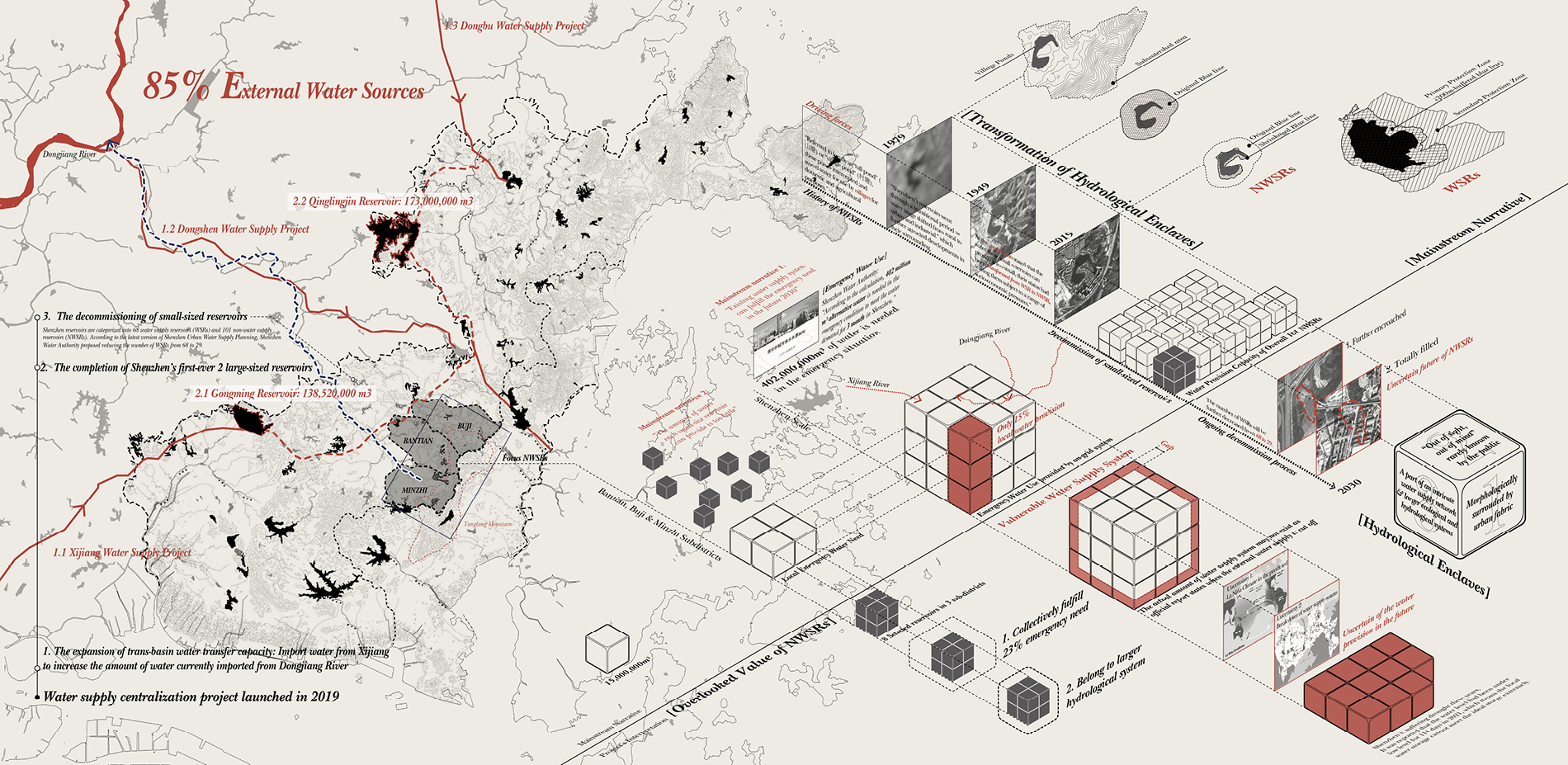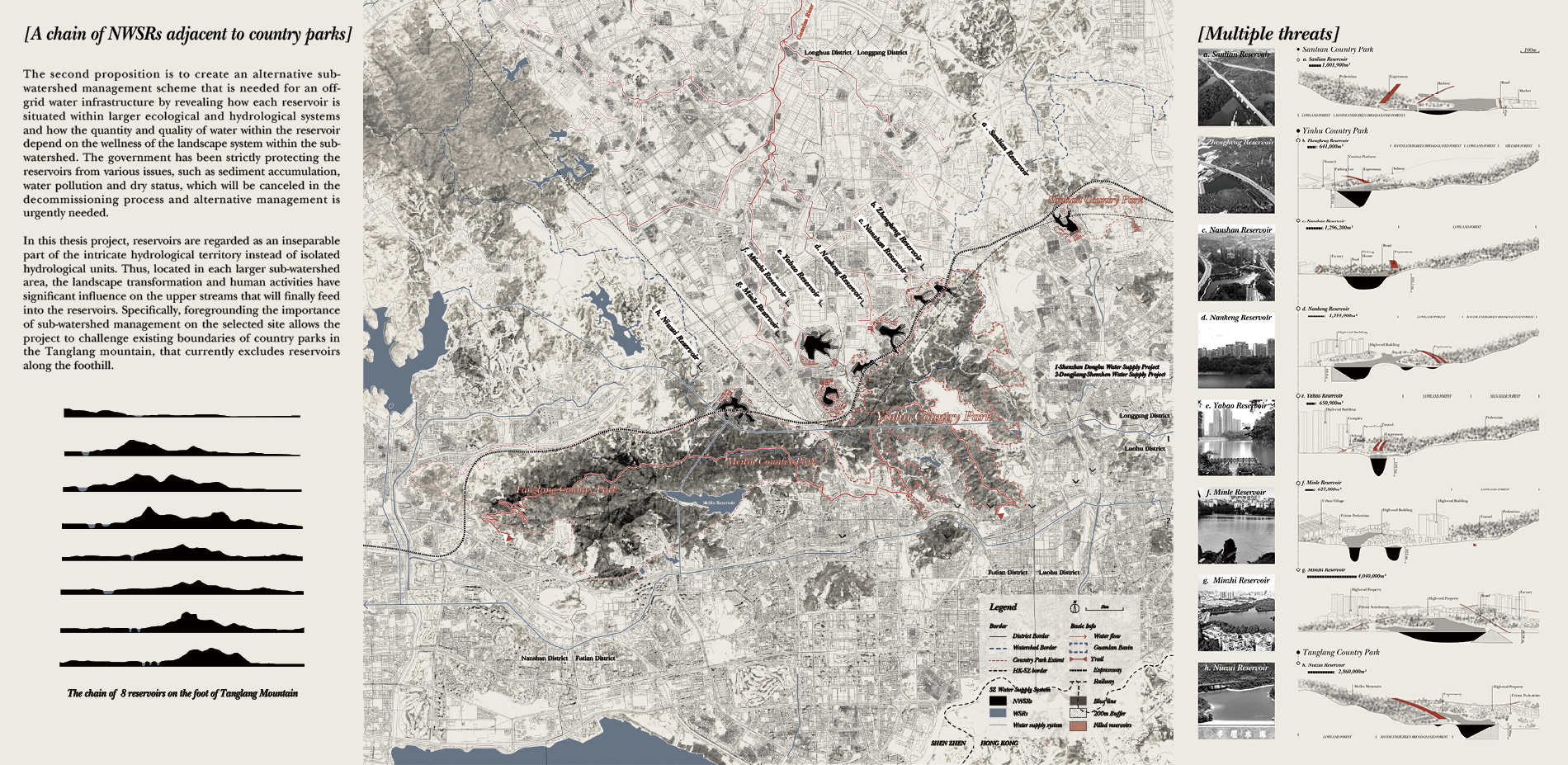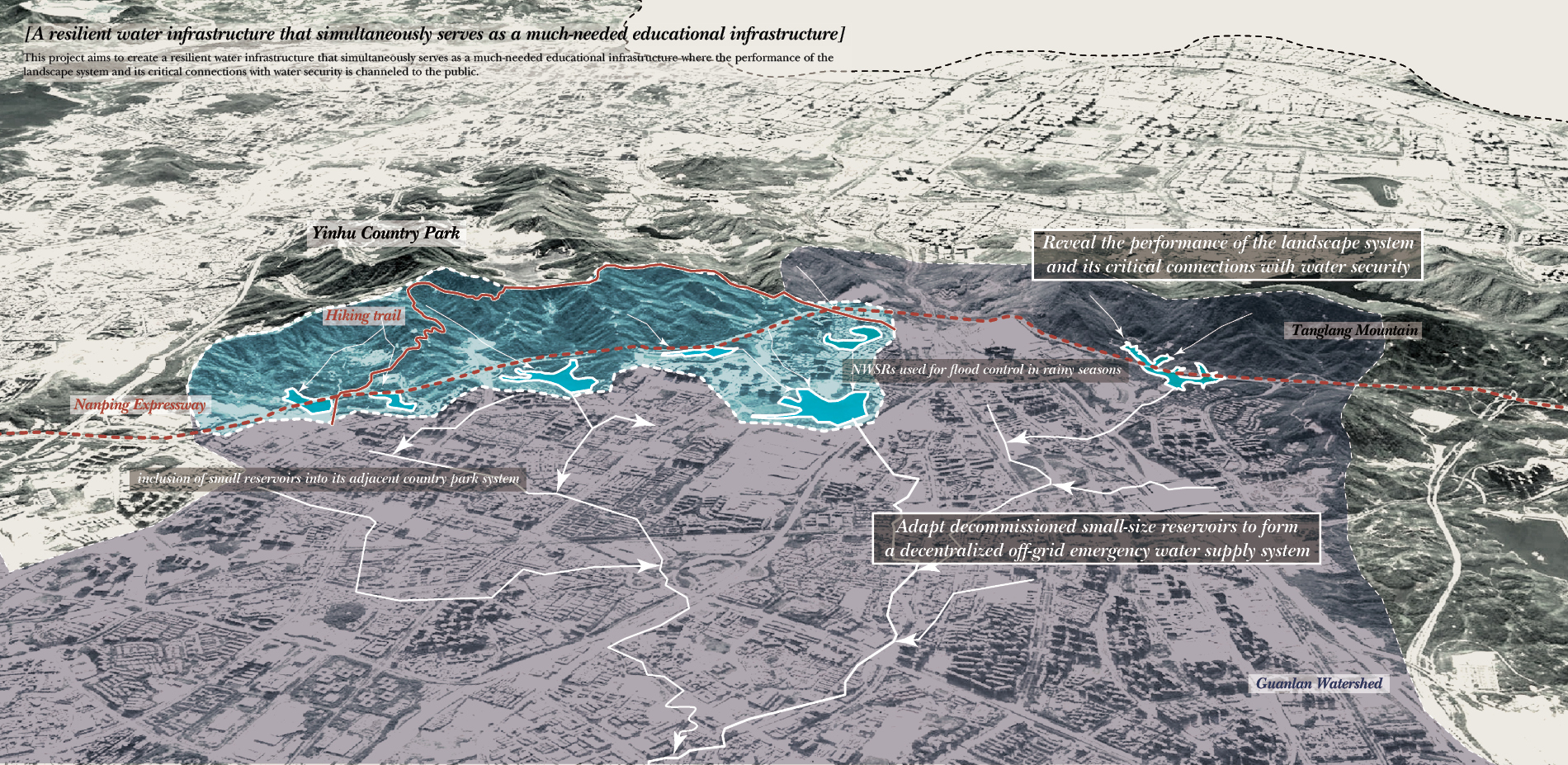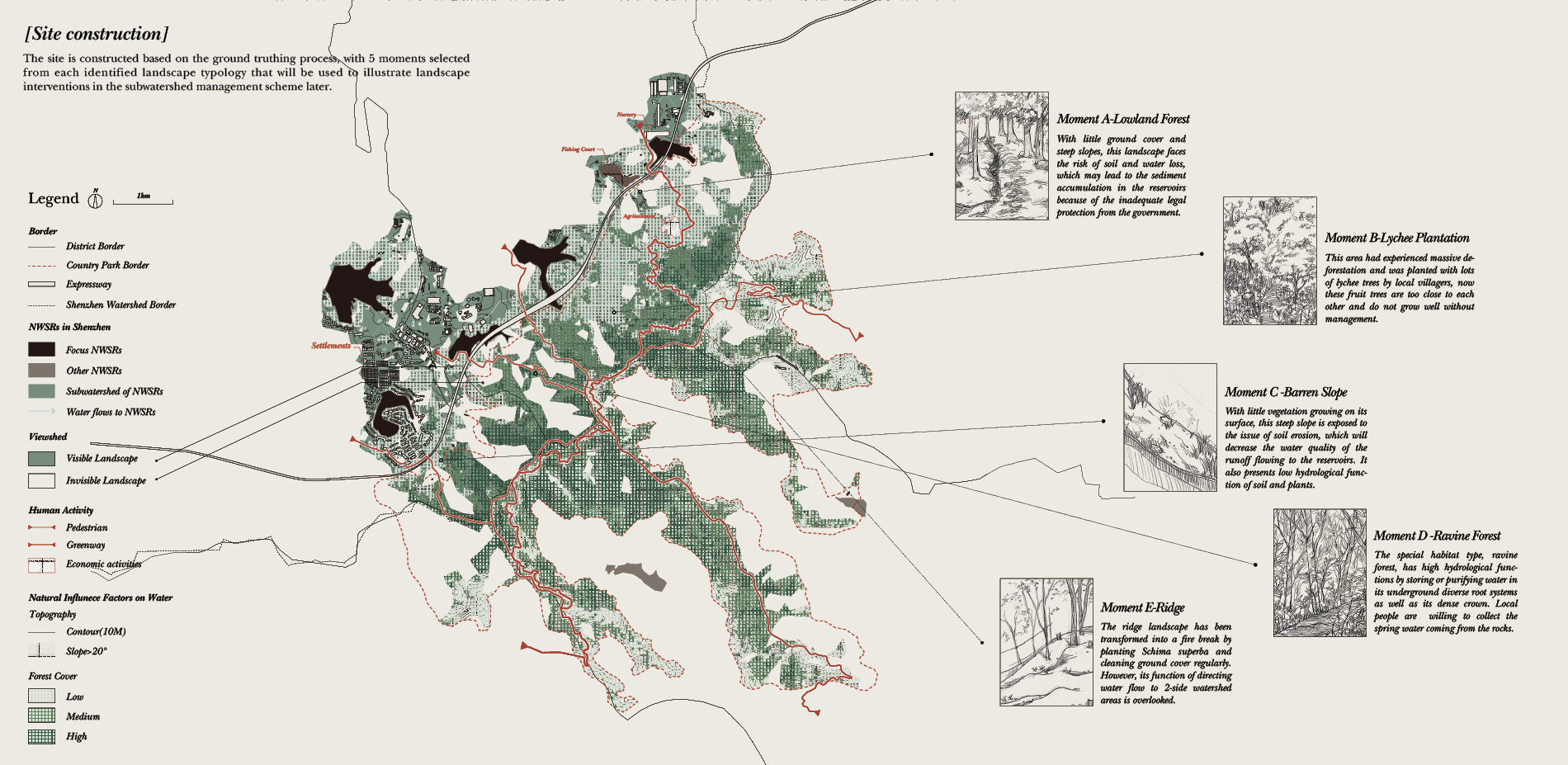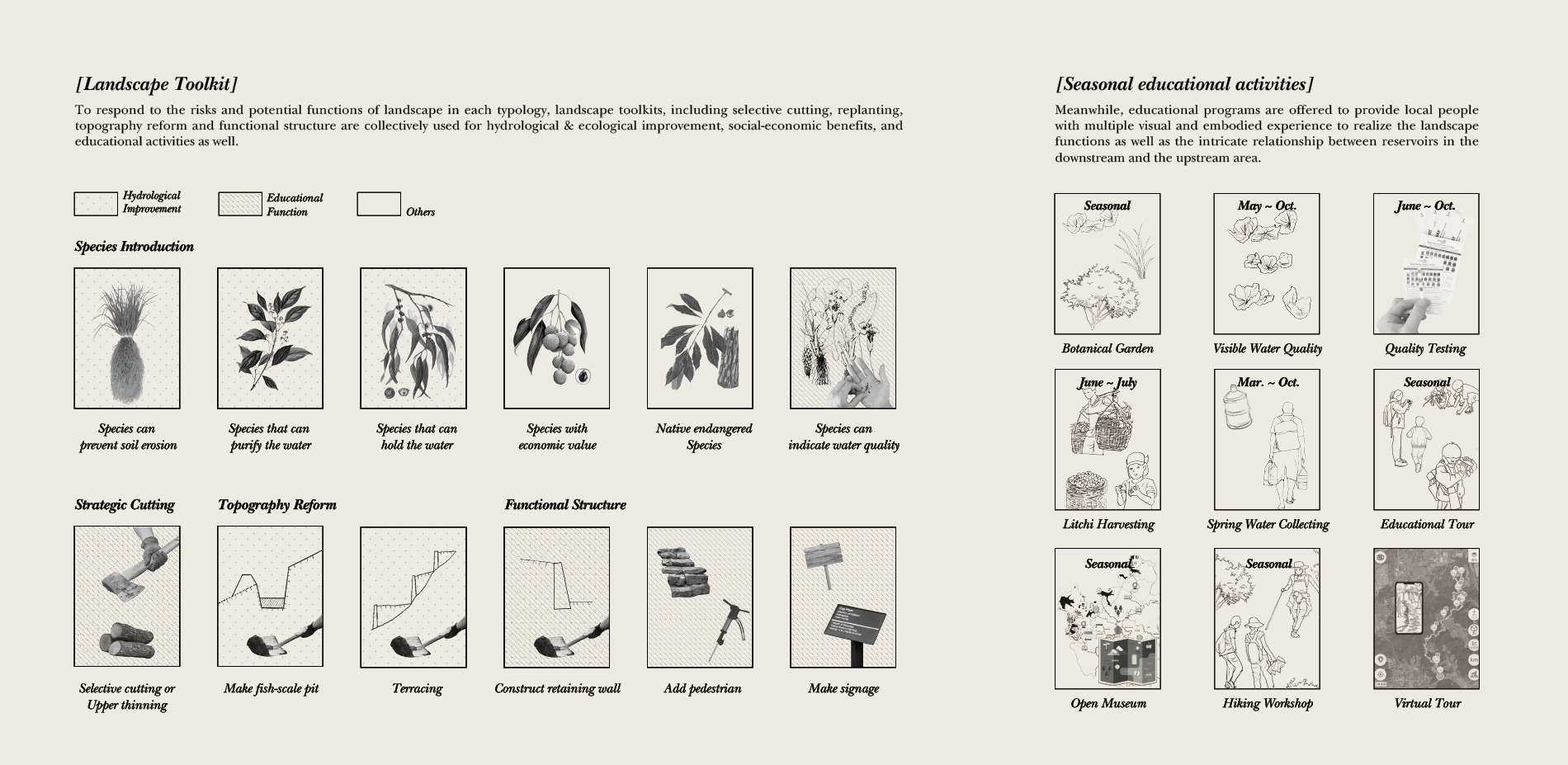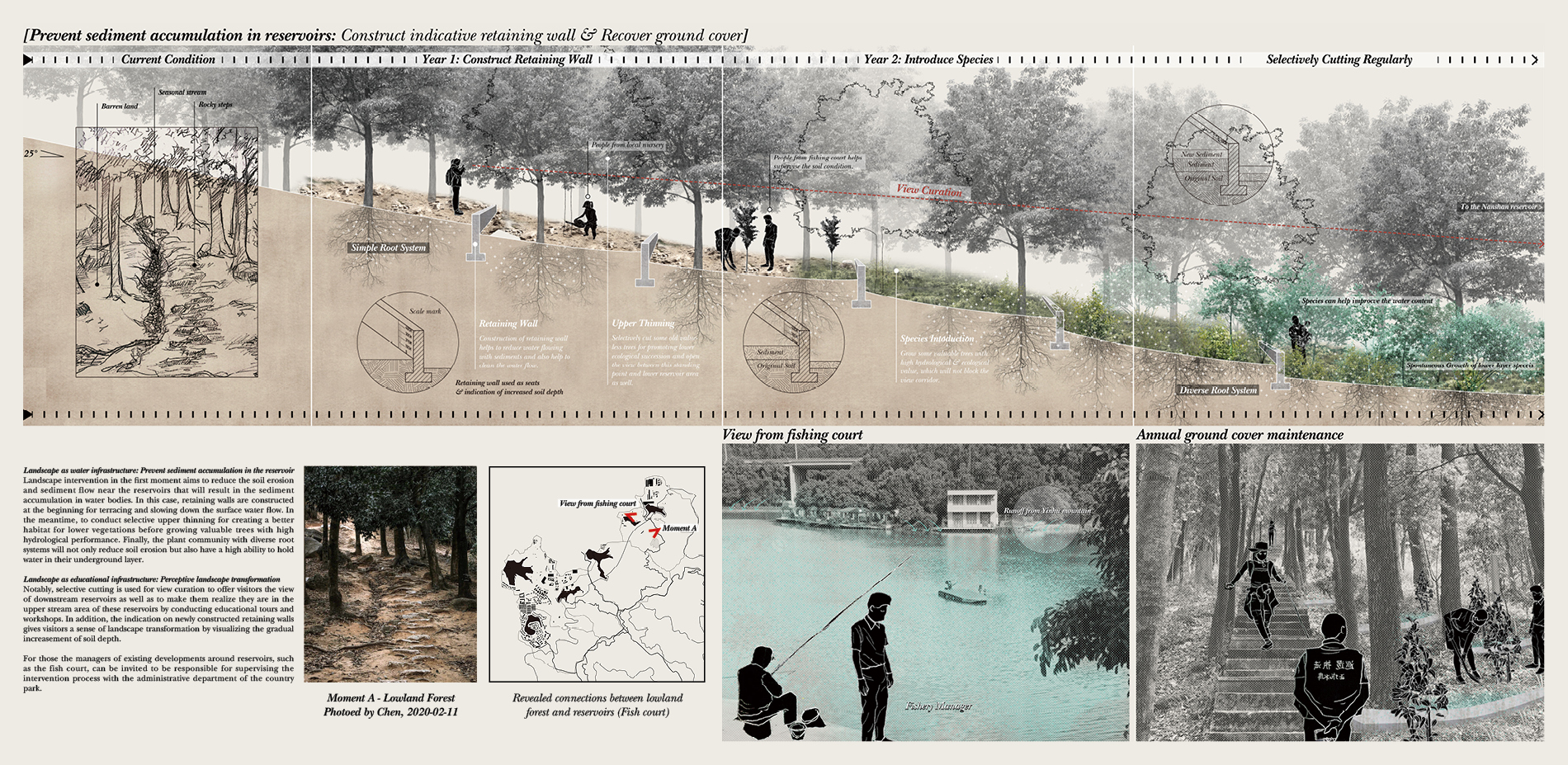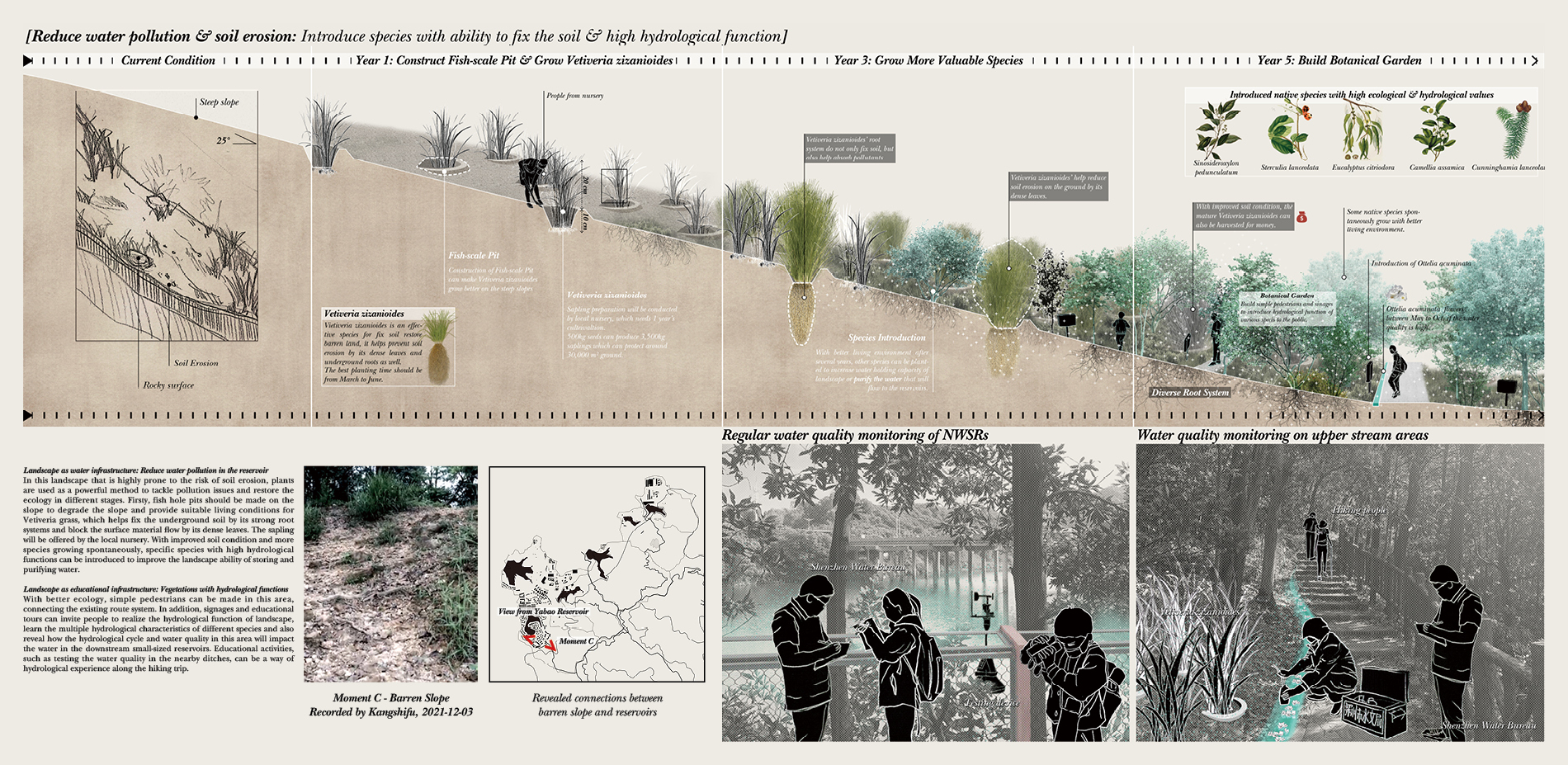Hydrological Enclave: Adaptive Management of Non-water Supply Reservoir
Honor Award
Analysis and Planning
Shenzhen, Guangdong, China
Shuyang Sun, Associate ASLA;
Faculty Advisors:
Xiaoxuan Lu, ASLA;
The University of Hong Kong
Strong communicates the value of landscape to water quantity and quality in the face of rapid urbanization.
- 2023 Awards Jury
Project Statement
Decommissioning process of small-sized reservoirs in Shenzhen makes these reservoirs highly vulnerable to urban encroachment, leaving a series of ecological and socio-economic issues. “Hydrological Enclaves”is used to highlight three interconnected realities of these reservoirs while also shed light on potential space of intervention. Focusing on a chain of small reservoirs, firstly, this project aims to adapt these soon-to-be decommissioned small-sized reservoirs into decentralized off-grid water sources to increase local water resiliency. Simultaneously, transforming them from on-grid to off-grid water infrastructure necessitates an alternative sub-watershed management scheme which also serves for a much-needed educational infrastructure.
Project Narrative
Non-water supply reservoirs in the face of uncertainty in Shenzhen
This project focuses on Shenzhen’s “urban waters”, particularly small-sized reservoirs that are undergoing rapid transformations and uncertain social-economic issues due to the municipal-wide water supply centralization project launched in 2019. The centralization project includes expanding a new external water source from Xijiang River, constructing Shenzhen’s first-ever two large-sized reservoirs, and the decommissioning of small-sized reservoirs, which means changing these reservoirs’ status from Water Supply Reservoir to Non-Water Supply Reservoirs.
Hydrological Enclaves
The project title, “Hydrological Enclaves”, foregrounds the overlooked value and potential of small-size reservoirs, first, it indicates the unique morphology where small-size reservoirs are surrounded by densely built urban context. This project positions small-size reservoirs as a unique urban heritage and argues that interventions are urgently needed to avoid the encroachment to the very edge of the reservoirs or even entire “reclamation”.
Second, it refers to the fact that these small-size reservoirs have long been “out of sight, out of mind” because water infrastructures in Shenzhen are under strict control and completely fenced off to prohibit public access. This project recognizes these reservoirs as important public amenities and identifies the current decommissioning process as an opportunity to increase public accessibility as well as raise public awareness of the socio-environmental values of these reservoirs.
Third, it points out the lack of understanding of how small-size reservoirs are part of an intricate network of water supply and situated within larger ecological and hydrological systems. These small reservoirs have the ability to collect runoff from their adjacent mountains and are highly influenced by the landscape transformation on upper areas.
A resilient water infrastructure that simultaneously serves as a much-needed educational infrastructure
This project aims to create a district-level off-grid emergency water supply system by identifying loopholes in the mainstream narrative as well as to create an alternative sub-watershed management scheme to ensure the preferable quantities and qualities of water collected for emergency water supply by revealing how each reservoir is situated within larger ecological and hydrological systems, where the performance of the landscape system and its critical connections with water security is channeled to the public.
Notably, this project focuses particularly on a chain of small reservoirs located along the northwestern foothill of Tanglang Mountain, which has the ability of flood control. A virtual ground truthing process is deployed to construct the site by comparing information from GIS and those extracted from social media.
Subwatershed management scheme
Responding to the risks and potential functions in the identified landscape, toolkits including selective cutting and replanting, topography reform and functional structures are used collectively in different stages. They not only help to improve the local hydrological function and landscape performance, but also provide visitors with multiple visual and embodied experiences. The scheme invited local agencies to participate in the management process, including people from the nearby fishery, nursery and the country park, where economic benefits are used to maintain the system.
Plant List:
- Earleaf acacia
- Taiwan Acacia
- Brown salwood
- Chinese Buttonbush
- Incense Trees
- Tea Plant
- China Fir
- Lemon-scented gum
- Common Yellow Steg-fig
- Ottelia
- Red Psychotria
- Chinese Gugertree
- Sinosideroxylon pedunculatum
- Lance-leaved Sterculia
- Boxleaf Eugenia
- Vetiver
